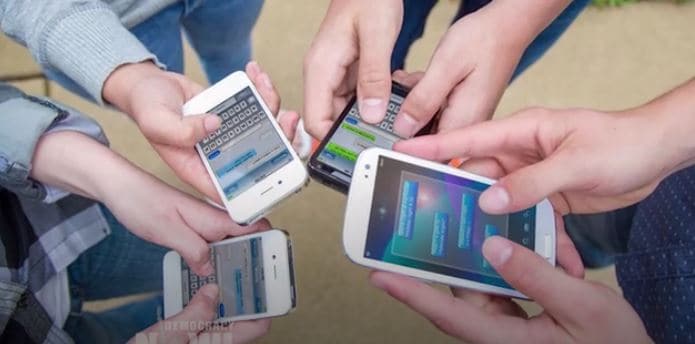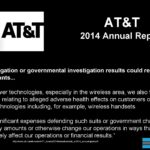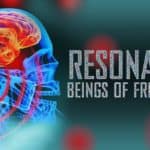Ninety-five out of every 100 American adults owns a cellphone today. And worldwide, three out of four adults now have cellphone access. The wireless industry is one of the fastest-growing on Earth, raking in annual sales of $440 billion in 2016. But are cellphones safe? A new investigation by The Nation suggests that’s a question that cellphone giants prefer you don’t ask. We speak with Mark Hertsgaard, The Nation’s environment correspondent and investigative editor. His report, co-authored with Mark Dowie, is headlined “How Big Wireless Made Us Think That Cell Phones Are Safe.”
Transcript
AMY GOODMAN: This is Democracy Now!, The War and Peace Report. I’m Amy Goodman, with Nermeen Shaikh.
NERMEEN SHAIKH: Ninety-five out of every 100 American adults owns a cellphone today. And worldwide, three out of four adults now have cellphone access. The wireless industry is one of the fastest-growing on Earth, raking in annual sales of $440 billion in 2016.
But are cellphones safe? Well, a new investigation by The Nation suggests that’s a question that cellphone giants prefer you don’t ask. The article, by journalists Mark Hertsgaard and Mark Dowie, is headlined “How Big Wireless Made Us Think That Cell Phones Are Safe.”
The article notes that cellphones were first marketed to U.S. consumers in the 1980s without any government safety testing. Then, a decade later, one of the industry’s own hand-picked researchers, George Carlo, reportedly told top company officials, including leaders of Apple, AT&T and Motorola, that some industry-commissioned studies raised serious questions about cellphone safety. On October 7th, 1999, Carlo sent letters to industry CEOs urging them to give consumers, quote, “the information they need to make an informed judgment about how much of this unknown risk they wish to assume.” Instead, the Cellular Telecommunications and Internet Association reportedly tried to discredit Carlo’s findings, and had him physically removed from its premises during its annual conference in February 2000.
AMY GOODMAN: The Nation magazine investigation notes Carlo’s story “evokes eerie parallels with two of the most notorious cases of corporate deception on record: the campaigns by the tobacco and fossil-fuel industries to obscure the dangers of smoking and climate change, respectively.”
For more, we go to San Francisco to speak with one of the authors of this new investigation, Mark Hertsgaard, The Nation’s environment correspondent and investigative editor, author of seven books, including Hot: Living Through the Next Fifty Years on Earth.
Mark, welcome back to Democracy Now!
MARK HERTSGAARD: Hi, Amy.
AMY GOODMAN: Talk about what you have found, what we do know about cellphone safety, and how dangerous are cellphones.
MARK HERTSGAARD: Let me emphasize, Amy, our piece is not saying that cellphones are safe or are not safe. Our piece is an investigative exposé showing you how the cellular industry has worked for 25 years behind the scenes to convince you that cellphones are safe, when, in fact, if you look at the independently funded science, the picture is a lot more mixed than that. And as you mentioned, there’s that smoking gun memo—letter, I should say—from George Carlo in 1999 telling the CEOs of all these big companies, “Look, this stuff is raising serious questions, especially about kids and cancer and genetic damage.”
And I think that’s the real parallel with both Big Oil and Big Tobacco. In each case, these big companies were told privately by their own scientists that there are serious questions about your product, whether it be cigarettes or fossil fuels or cellphones. And in each case, those executives decided not to share that with the public, but rather to keep that information to themselves, while telling the public and telling the press and telling policymakers there’s no problem.
There is a lot of evidence suggesting that we need to be a lot more careful about these cellphones. The World Health Organization has listed them as a possible carcinogen. And just last week, here in the United States, the National Institutes of Health had a major study, peer-reviewed, about cellphone radiation. And the peer-review scientists, who are independent of government, said that there was, quote, “clear evidence,” unquote, that cellphones can cause cancer.
And that is something that you have not read in the American media. And I have to say that that’s another part of the story, Amy, is how the U.S. news organizations and journalists have been hoodwinked, yet again, by a corporate propaganda campaign, where we listen more to what the industry says than to what independent scientists are saying.
NERMEEN SHAIKH: And, Mark, could you talk a little about the way in which wireless industries have tried to influence the scientific research on the effects, possible effects, of cellphone use?
MARK HERTSGAARD: Sure. The term that they use is “war gaming.” They have war-gamed the science. That comes from an internal memo in 1994 from Motorola, a major cellphone manufacturer, which at that point was already facing lawsuits from customers claiming that their brain tumors had come from Motorola-supplied equipment. War gaming means a number of different things. It means funding science that is friendly to industry. It means discrediting science, or attempting to discredit scientists, that are critical of industry. And it means trying to put industry-friendly scientists on key advisory boards, such as the World Health Organization.
And our piece in The Nation magazine documents how when the World Health Organization was preparing, in the year 2011, to render a judgment on how likely cellphones are to cause cancer, the industry made sure to get a number of its scientists onto the advisory boards that consulted with the WHO on that decision. And that is contrary to the conflict-of-interest rules that the WHO has, but the industry managed to circumvent those. It put money into that process. And at the end of the day, in 2011, the WHO, World Health Organization, called cellphone radiation a “possible” carcinogen.
But a number of the scientists who were on that committee, who we interviewed, said that they wanted to call it a “probable.” And one scientist even wanted to call it a “known” carcinogen. So, later this year, the WHO is going to revisit this question of cellphone radiation, and they told us that they will look very carefully at this recent study from last week by the National Toxicology Program of the U.S. government that found clear evidence that cellphones can cause cancer.
AMY GOODMAN: Mark, you wrote the industry has “also mounted a campaign to discredit Lennart Hardell, a Swedish professor of oncology serving on the working group. Hardell’s studies, which found an increase in gliomas and acoustic neuromas in long-term cell-phone users, were some of the strongest evidence that the group was considering.” Gliomas, acoustic neuromas, explain what they are and what you feel has been suppressed or discredited.
MARK HERTSGAARD: Well, Lennart Hardell, the Swedish scientist you mentioned, Amy, he was the one scientist on that WHO committee who wanted to call cellphone radiation a “known” cancer risk—not probable, not possible, but known. That would be Category 1. And he did that on the basis of his studies of gliomas. They are a nasty brain tumor, brain cancer, partly because it’s very difficult to treat them. It’s not like a specific sort of nodule that you can take out. They kind of leak through the brain in long strands.
And Hardell was especially concerned about what this means for children. And I should note here, Amy, that, you know, the United States is quite different than other advanced countries on this. In Britain, in France, in Israel, the governments have issued very strict limitations on cellphone use by children. In the public schools in France, there are no iPads, there is no wireless, partly for the reasons of addiction, but also because of these concerns about health.
And in the case of Lennart Hardell in Sweden, once he started to publish those findings in 2002, the industry immediately mobilized to have two of their friendly—industry-friendly scientists immediately put out a paper condemning Hardell. Well, we found out that those two scientists, at the very time that they were posing as independent scientists and saying that Mr.—that Dr. Hardell’s findings were methodologically incoherent, they were consulting—they were consulting to Motorola as expert witnesses in a brain tumor case. So, who are you going to believe?
AMY GOODMAN: Well, we have to leave it there, but we’re going to do Part 2 and post it as a web exclusive online at democracynow.org. There’s just too much to talk about, from the internet of things, talking about 5G, and how the campaign here mirrors what happened with Big Tobacco. Mark Hertsgaard’s new special investigation, we’ll link to, is headlined “How Big Wireless Made Us Think That Cell Phones Are Safe.”










